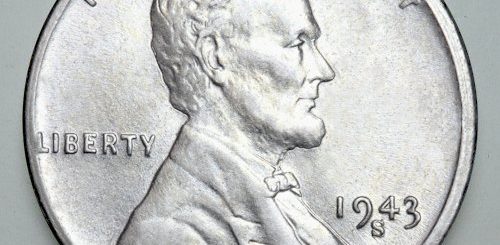US Large Cent Coin – Chain Cent
The United States Large Cent is the first coin minted and released for public circulation, together with Half Cent coin. This coin served the US public for 64 long years before it was replaced by the Flying Eagle Coin. The minting of this coin started in 1793 and stopped in 1857 due to production cost issues and the unpopularity of its designs. The US Large Cent series of coins bears one of America’s most controversial designs during its time. And this is just one of the reasons why these oversized coins (26 to 28 mm in diameter and weighs 10 to 13 grams) are widely sought-after by serious numismatists of today.
All seven designs of the US Large Cent issues bore the image of Liberty although in varying depictions. The first issue in 1793 was designed by Henry Voigt, a rather rogue or crude depiction of the lady with wildly flowing hair on the obverse side and a circle of chain on the reverse. The design was called the Flowing Hair Cent Chain Reverse. Although this design was the first mint of the Federal Government using its own equipment, the public didn’t forgive its unattractiveness. The coin met an outraged public when it was released. Not only did the public thought it was ugly, but they also thought it to be offensive because of its undertone of slavery with the chain. This first Federal regular issue, which only had a total of 36,103 coins, did not survive very long. The coin was redesigned later that year by Adam Eckfeldt under the orders of David Rittenhouse, then Mint Director of the U.S.
Eckfeldt made Liberty’s hair wilder and longer and replaced the chain with a wreath of indistinct leaves. The revised coin was referred to as the Flowing Hair Cent Wreath Reverse. A total of 63,000 coins were minted. David Rittenhouse was still unhappy with the new design so he commissioned another designer in the same year. Joseph Wright toned down Liberty’s hair and added Liberty Cap on the obverse. He also revised the wreath on the reverse and used laurel leaves for it. This new design called Liberty Cap Cent enjoyed a better reception from the public. It lasted until 1796.
Lady Liberty’s appearance improved more and more in the succeeding four designs: the Draped Bust Cent, minted from 1796 until 1807; the Classic Head Cent, from 1808 until 1814; and the Matron Head Cent (Middle Dates), from 1816 until 1839; and the Braided Hair Cent (Late Dates), from 1839 until 1857. Despite the improvement, minting of these Large Cents stopped when the US Mint succumbed to the high cost of production and favored a smaller coin struck in cheaper metal.


